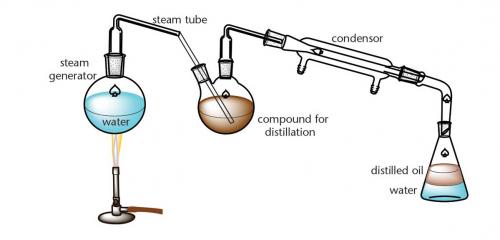‘A strong background in chemistry works miracles’, according to chemist turned perfumer Christophe Laudamiel. ‘The mystery and myriad of scents found in perfumes actually have very rational explanations based on concepts such as volatilities, Van der Waals interactions, hydrogen bonds, and chemical reactions between alcohols, aldehydes, and amines’, he explained when describing his career (bit.ly/312SOst).
Perfumers have argued that there is an essential equivalent to harmonious chords in music: namely harmonious vapour pressures.
Harmonious chords of the musical kind are observed to have vibration frequencies (pitches) that are proportional to simple ratios. For example, a triad is three notes, with intervals of a third between each, played or sung together. If there are large differences in frequencies, the ear separates them and harmony is considered lost, at least in traditional Western music. The chords are integrated into octaves for a complete musical effect.
The top note of a perfume’s fragrance ‘chord’ is a very volatile group (vapour pressure 187–18 Pa, such as citrus). A second (13–2.7 Pa, such as jasmine) and third group (2.7–0.11 Pa, such as sandalwood) are the middle and bottom notes of the chord. They are all released and smelled sequentially.
In a basic distillation, the starting material can be heated to boiling in water rather than passing steam through it. It can then be extracted overnight in alcohol and strained to make a more concentrated starting point for steam distillation.
A good and readily available raw material is eucalyptus leaves. There are a large number of eucalyptus species, each with its unique fingerprint of chemicals in their leaves. The composition of each eucalypt type determines its usefulness for medicinal, industrial or perfumery purposes. Australia has an important and rich history of eucalypt distillation (bit.ly/3cXApl6 and bit.ly/35cXdL4).
Most leaves, barks, fruit (peel) and the like are also good raw materials for distillation. Herbs such as rosemary, thyme and oregano work well. Most flowers do not. They are usually too delicate and the oil yields are very low and smell strange. The exceptions are lavender and roses. ‘Stinking Roger’ (Tagetes family, a weed) has a lot of oil in the leaves. Distillation times are usually reasonably short (due to modest boiling points).
So, what does the physical chemistry mentioned by Laudamiel boil down to?
- Water boils when its vapour pressure reaches atmospheric pressure and that is around 100°C depending on the current atmospheric pressure.
- Aqueous mixtures of liquids that are reasonably insoluble in water boil when the sum of their vapour pressures reaches atmospheric pressure.
- The higher the boiling point of the other liquid, the lower its vapour pressure at 100°C and the less it contributes to the distillate. Eucalyptus oil consists mainly of eucalyptol (1,8-cineol, b.p. 166–167°C).
- Many essential oils decompose before reaching their boiling points and this explains the advantage of steam distillation.
- A distillate may result in mainly water and little oil. If the oil is partially water soluble, and you throw out the water, you are literally throwing out the (baby) oil with the (bath) water! So a still that allows you to recycle the condensed water back into the pot overcomes this (see J. Chem Educ. 1988, vol. 65, p. 92).
The exponential relationship between vapour pressure and temperature, described by the Clausius–Clapeyron equation, is important for perfume sales in different seasons and for different climates, and formulations differ accordingly.
The distillate products from leaves can be moderately toxic when ingested (e.g. eucalyptus and tea tree oils), and are labelled ‘poison’ in commercial products. In practice, toxicity depends on the dose. This toxicity can come from the secondary metabolites in the plant that it uses to protect itself from insect attack and microbial disease. The koala is unique in being able to deal with the eucalypt leaf, its sole food (see Sept/Oct 2019 issue, p. 16).
And then there are those who assign magical protective and healing properties to such ‘natural’ products. Despite the claims, there is no evidence that eucalyptus essential oil vapour is a remedy for COVID-19 (bit.ly/2W2pqjG).




